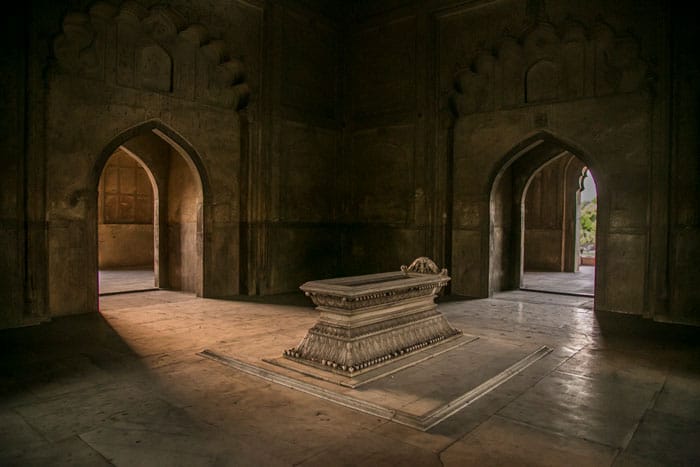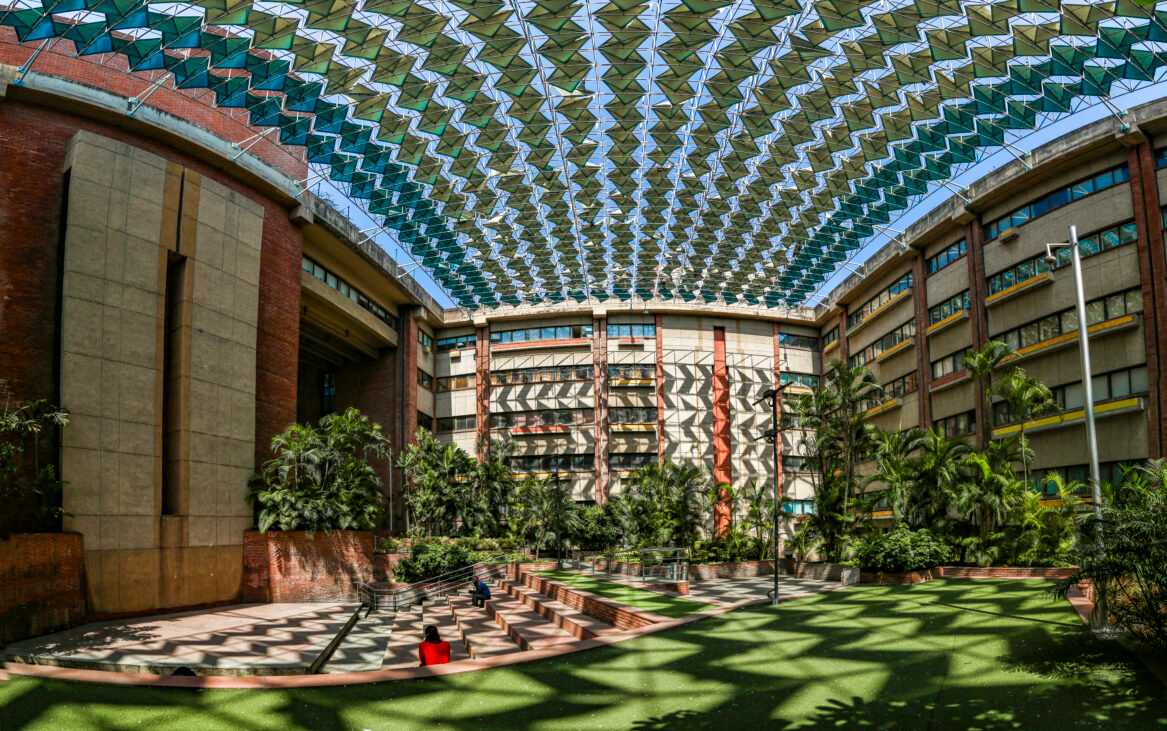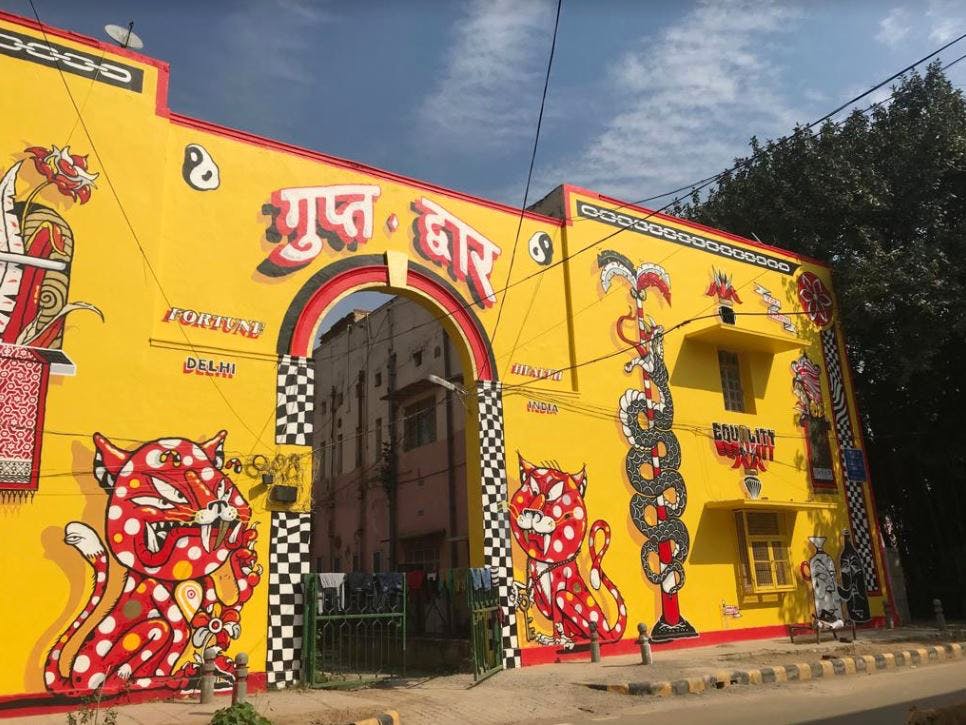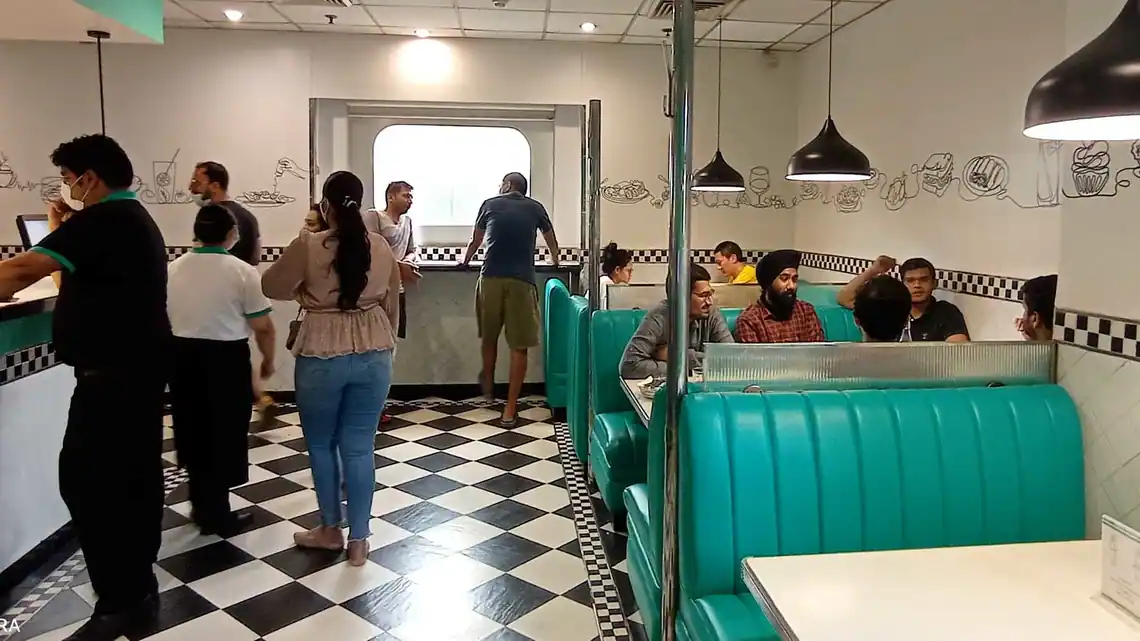Safdurjung Tomb

Safdarjung's Tomb is a magnificent mausoleum, built in the mid-18th century to commemorate the life of Safdarjung, the Nawab of Oudh, Prime Minister of the Mughal Empire and one of the only few able administrators of the Mughal Empire during its years of decline.
The Life of Safdurjung

Abul Mansur Mirza Muhammad Muqim Ali Khan Beg, popularly known as Safdarjung, was one of the protagonists in the history of the Mughal Empire during the 18th century. He was born in 1708 into a noble Persian family that had migrated to India during the reign of Emperor Akbar. His maternal uncle Burhan-ul-Mulk Saadat Ali Khan I, served as the governor of the province of Awadh (present-day Uttar Pradesh), where Safdarjung spent his formative years. From a young age, Safdarjung received a comprehensive education in Persian literature, Islamic theology, and statecraft, which served as the foundation for his future as an administrator.
Safdarjung's ascent to power began in the backdrop of a declining Mughal Empire, the rise of regional powers and, consequently, a power grab by these powers. In 1739, Safdarjung entered imperial service as the governor of Awadh, where he distinguished himself as a capable administrator and military strategist. His success in suppressing rebellions and maintaining order earned him the favor of Emperor Muhammad Shah, who appointed him as the Prime Minister of the Mughal Empire in 1748 and gave him the title of "Safdurjun" and the governorship of Kashmir.
As Prime Minister, Safdarjung wielded considerable influence over the affairs of the empire, overseeing matters of governance, diplomacy, and military strategy. His tenure was marked by a series of challenges, including foreign invasions, internal revolts, and economic instability. Safdarjung's leadership was put to the test during the invasion of Nadir Shah in 1739 and later during the raids of Ahmad Shah Durrani, both of which inflicted significant damage on the Mughal Empire.
Despite these challenges, Safdarjung implemented a series of administrative reforms aimed at strengthening the central authority, improving revenue collection, and enhancing the efficiency of the imperial bureaucracy. He also played a crucial role in mediating disputes among rival factions within the Mughal court and forging alliances with regional powers to counter external threats.
However, Safdarjung's tenure as Prime Minister was not without controversy, as he was accused of corruption, nepotism, and authoritarianism by his critics. His consolidation of power and accumulation of wealth at the expense of the treasury alienated many members of the nobility and eroded public confidence in the imperial administration.
Safdarjung passed away in 1754, and in death, he was honoured with the construction of a grand mausoleum in New Delhi, which bears his name and serves as a fitting tribute to his memory. Safdarjung's Tomb, with its majestic domes, ornate gateways, and lush gardens, stands as a testament to the architectural and cultural heritage of the Mughal era, preserving the legacy of one of the empire's most prominent figures for future generations to admire and study.
Safdurjung Tomb and Its Architecture
It was commissioned by Nawab Shuja-ud-Daula, the son of Safdarjung, after pleading with the Mughal ruler, to honor his father's memory. The construction of Safdarjung's Tomb commenced and was completed in 1754 by Bilal Muhammad Khan and took about 3 lakh rupees to complete. The tomb's location, on a prominent avenue in the heart of Delhi, reflects the significance of Safdarjung's role in the Mughal court and his contribution to the administration of the empire.
Designed by an Abyssinian (modern-day Ethiopia) architect, the tomb stands as a masterpiece of Mughal architecture, characterized by its grand scale, intricate ornamentation, but held back by its asymmetrical design. The tomb complex comprises several key elements, each contributing to its beauty and grace.
The central focus of the complex is obviously the mausoleum itself, built primarily of red sandstone and marble. The tomb stands on a raised platform, giving it a commanding presence amidst the surrounding garden. The architectural style bears resemblance to earlier Mughal structures, particularly Humayun's Tomb, with its prominent dome, arched entrances, and ornate facades. Roccoco is plastered on the insides of the tomb, and the ceiling and its entrance is painted and ornamented gold.
The interior of Safdarjung's Tomb features a central chamber that houses the cenotaph of Safdarjung, surrounded by marble screens and intricate floral motifs. The cenotaph is just a replica of the actual grave, which lies in a crypt below. The chamber walls are adorned with Quranic inscriptions and delicate plasterworkThe use of marble and precious stones in the interior decoration adds to the opulence and grandeur of the tomb.

The main tomb is surrounded by a sprawling char bagh, or Persian-style garden, divided into four neat quadrants by pathways and water channels. The garden layout, a common feature of Mughal architecture (which can be seen in Humayun's tomb as well), is meant to symbolize the concept of paradise. The garden's meticulous planning and symmetry enhance the tomb complex's visual appeal and provide a serene setting for visitors to explore.
Two imposing gateways, adorned with intricate carvings, calligraphy, and geometric patterns, are located on either side of the tomb. These gateways serve as grand entrances to the tomb complex and feature pavilions on either side, which once served as rest houses for travellers and pilgrims. The architectural detailing of the gateways and pavilions is a testament to the skill and craftsmanship of Mughal artisans, who employed techniques such as inlay work, relief carvings, and jaali screens to embellish the structures.

Atop the main tomb rises a large central dome, crowned by an inverted lotus finial, which is another hallmark of Mughal architecture. The dome is surrounded by four smaller domed pavilions, each supported by slender minarets. However, these elements fail to create a sense of symmetry and balance like the Taj Mahal. In a way, the lack of precision is indicative of the sheer decline of Mughal power; the once all-powerful empire now lay in ruins and its architectural legacy, defined by the little details too, had fallen from grace.
Nearby Attractions
Lodhi Garden
Lodhi Gardens is steeped in history, with its sprawling grounds adorned with architectural remnants from the Lodhi dynasty. Visitors can spend their day exploring the gardens' meticulously landscaped grounds that are punctuated by the gentle rustle of leaves. Shaded pathways wind their way through the verdant foliage, inviting walkers and joggers to explore the park's hidden corners and secluded nooks. The park's diverse flora and fauna provide ample opportunities for capturing stunning images and observing the beauty of the natural world up close.
India Habitat Centre

The India Habitat Centre is a prominent cultural and intellectual hub in the heart of New Delhi, India. Established in 1993, the IHC serves as a multifaceted institution dedicated to fostering creativity and innovation across various fields, including art, architecture, literature, and sustainable development. Designed by architectural giant Joseph Allen Stein, the IHC stands out as an eclectic mix of high-rise architecture and greenery. The building houses a diverse range of facilities and activities aimed at promoting social, cultural, and intellectual exchange. Therefore, it regularly plays hosts to academic seminars and conferences, art festivals and movie festivals. It also has many famous eateries, so make sure you check it out if you're in its vicinity!
Lodhi Art District

The Lodhi Art District is a vibrant urban art initiative located in New Delhi, India. Spanning the walls of buildings, alleys, and public spaces in the Lodhi Colony neighborhood, this open-air art gallery showcases a diverse array of street art, murals, and installations created by both local and international artists. The Lodhi Art District emerged as a grassroots initiative in 2015, spearheaded by St+art India Foundation, a non-profit organization dedicated to promoting street art and urban culture. The project was conceived as a way to revitalize the Lodhi Colony neighborhood, which was originally built as a residential area for government employees in the 1940s but had fallen into disrepair over the years. Today, it houses over 50 murals and other works of art that can be viewed absolutely free of charge, courtesy the St+art foundation.
National Science Centre
Established in 1992, the NSC is situated in the Pragati Maidan area of the capital city and serves as a hub for science enthusiasts, students, educators, and researchers. The NSC features a wide array of interactive exhibits, galleries, and displays covering various branches of science, technology, engineering, and mathematics. The NSC is also home to a state-of-the-art planetarium that allows visitors to enjoy captivating planetarium shows, 3D films, and virtual reality experiences that transport them to distant galaxies, explore cosmic phenomena, and learn about the wonders of the cosmos.
Dilli Haat
Dilli Haat is a bazaar unlike any other, focused exclusively on promoting traditional Indian handicrafts and handlooms while providing artisans and craftsmen from across the country with a direct market for their products. Inspired by the concept of a traditional village marketplace, Dilli Haat was designed to recreate the ambience and charm of India's rural bazaars within an urban setting. It features a diverse selection of products, including textiles, pottery, woodwork, metalwork, jewellery, paintings, and leather goods, each showcasing the unique craftsmanship and cultural heritage of its region of origin and allowing buyers to engage one-on-one with the creators of the product. In addition to the products, it also features street food from all over India, which is sure to tickle one's taste buds.
Food Near Safdurjung Tomb
Habitat Hub

Earlier known as the All-American Diner and revamped in 2021, Habitat Hub is an attempt to recreate the rustic charm of the diners that can be found throughout the United States. In addition to breakfast regulars such as eggs, toasts, beans, bacon, pancakes, burgers and coffee, Habitat Hub also features Italian and Oriental food. They have a wealthy assortment of milkshakes available as well, all the while being priced reasonably.
Carnatic Cafe
The Carnatic Cafe in Delhi is a popular dining establishment that offers authentic South Indian cuisine.
The menu at the Carnatic Cafe features a wide range of classic South Indian dishes, prepared using fresh, locally sourced ingredients and traditional cooking techniques. Their dosas are thick, yet fluffy and crispy at the same time and served with a tangy sambhar and three varieties of chutney. Their standouts are their mysore masala dosa, and paper dosa, which are worth being washed down with their filter coffee. Each dosa is served with a selection of chutneys and sambar for dipping. One can also indulge in a range of rice dishes, including lemon rice, tamarind rice, coconut rice, and biryanis, all cooked to perfection and served with accompaniments like raita and papad.
Karim's, India Islamic Cultural Centre
Although the original Karim's lies in the narrow lanes of Chandni Chowk, this one is the superior establishment in our opinion. It's easily accessible and has a far better seating arrangement, in addition to having better food. The menu has almost every meat-based curry and kebab dish you can think of, but their standouts are the Malai Chicken Tikka, Mutton Qorma and their Malai Koftas, topped off by their Sheermal and Khamiri Rotis.
Dahi ke Sholay, Dilli Haat

Although it sounds like this eatery might be a one-trick pony, but that is far from the truth. They have a wide variety of Dahi Ke Sholay, filled with things such as paneer, cheese, and prepared Italian or Afghani style, to name a few. They are an Instagram favourite, also in due part to their famed UFO burger and Grilled Cheese Sandwich.
Transport
The nearest metro station to Safdarjung's Tomb is the Jor Bagh Metro Station, which falls on the Yellow Line of the Delhi Metro. Fortunately for visitors, The tomb is located right next to the metro station, so last-mile connectivity is not an issue. Several bus routes connect different parts of Delhi to Safdarjung's Tomb and bus stops near Safdarjung's Tomb include Safdarjung Tomb Bus Stop, Lodi Road Bus Stop, and AIIMS Bus Stop. One can use ride-hailing service such as Rapido, Uber and Ola, but the use of private vehicles is discouraged due to a lack of parking space as well as strict enforcement of no-parking zones that can lead to your vehicle being towed away.
Ticket Prices and Timings
Safdarjung Tomb in New Delhi is typically open to visitors from 7:00AM to 5:00PM on all seven days a week, barring special circumstances. The entry fee for Indian citizens is usually nominal at ₹15 per adult, whereas Foreign tourists are charged a higher entry fee of ₹200 per person. A still camera can be taken in free of cost but if you wish to take a video camera, you must pay ₹25.

Comments ()